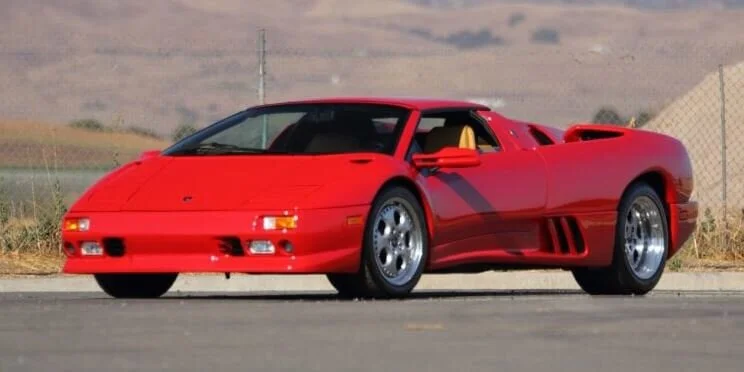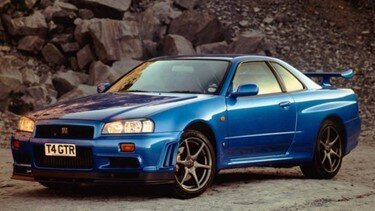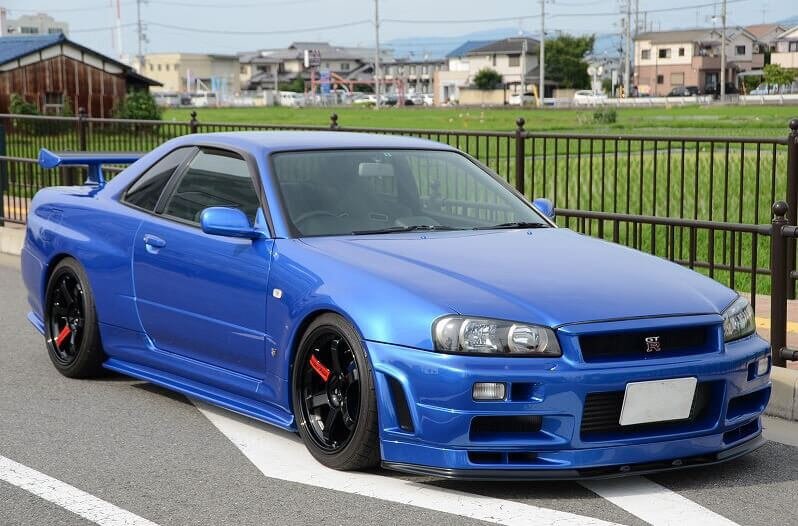We do not provide import/export services. This guide is for information only.
Once your vehicle is imported into the US, we can assist with registration and titling.
If you have ever looked into importing a car to the United States, you’ve probably heard of the 25-year Import Rule. For a car that was never sold in the United States to be eligible for importation it must be 25 years old - that is, unless it follows the Show and Display Rule. This rule says you can legally import a car that is less than 25 years old that was never sold in the US! What is this rule and what does it allow you to do? Let’s look deeper.
First, if you are looking to import a car using the Show and Display Rule, doing it alone is difficult, costly, and time-consuming. Your best bet is to contact an approved importer from the list on the NTHSA website. If you need a title or license plate for your imported car, Dirt Legal has you covered.
What is the Show and Display Rule?
The Show and Display Rule is a statutory amendment to the U.S. Federal Motor Vehicle Safety Standards which allows privately imported vehicles to be exempt from import restrictions under certain conditions, the most important of which being that it must have “historical or technological significance.”
The Show and Display Rule went into effect in 1999 and only applies to vehicles that can’t comply with the regular FMVS guidelines – cars that never passed U.S. safety standards and therefore were never sold new in the United States. These are called Grey Market Vehicles and they can only be driven on roads in the United States after meeting a strict set of requirements.
All applications are processed through the National Highway Traffic Safety Administration (NHTSA) and they have the final say on which cars can and cannot be allowed. As you may imagine, there is a lot of effort and expense required to get a vehicle imported – let alone tagged – with this exemption. That’s why the list of approved vehicles, which is found on the NHTSA website, is mostly limited to exquisite high-value sports cars. Getting something added to this list is difficult as well.
If a car qualifies for the Show and Display Rule, it may be granted limited use on public roads of up to 2,500 miles per year. The NTHSA reserves the right to approve importation but disallow the car from being registered.
Requirements to Meet the Show and Display Rule
Once an import approval has been granted for one vehicle of a certain production year, make and model, there’s no need to apply for the same type of vehicle again. That’s why the NHTSA keeps a running list of vehicles already approved and disapproved for import. The NHTSA has the right to inspect the vehicle annually to verify its mileage does not exceed the stated limit of 2,500 miles per year. Also, just because a vehicle is approved for import does not necessarily mean it will be approved for licensing and registration.
General Qualifications
A car may qualify for the Show and Display Rule if:
It is less than 25 years old
It is no longer in production
It is not a kit car or replica
It has documented historical or technological significance
It was produced in a limited number (typically 500 units is the threshold)
That specific model was never sold new in the United States
Major Restrictions
Limitations include:
The car cannot be in current production anywhere
The car cannot be sold without the written consent of the NHTSA – they don’t want people to make money off this rule
The car cannot be driven more than 2,500 miles per year – no cross-country trips in your Koenigsegg after all!
Of course, the NHTSA has several loopholes that serve them if they feel there are concerns regarding public safety. For example, they can approve the vehicle under the guidelines but disallow it from being registered for use on the road. They also have wording that allows them to impose any other limitation or restriction they see fit on a Show and Display vehicle, so naturally, this becomes a bit of a one-off situation – quite like the cars that it applies to.
What Does This Have to Do With Bill Gates?
While you might know Bill Gates mainly as the man that created Windows, he has a significant role in bringing the Show and Display Law to pass. Having earned billions of dollars, one can understand how Bill would be an exotic car enthusiast. That’s what led him to desire owning a legendary Porsche 959.
The trouble was that it didn’t have the approval of the Environmental Protection Agency or the Department of Transportation. So thanks to Customs, Bill Gates’ Porsche 959 sat for 13 years in storage at the Port of San Francisco.
If you don’t know about the 959, you should! This supercar had a 2.85-liter twin-turbocharged six-cylinder engine which put out 450 horsepower with a top speed of 197 mph. At the time, it was the world’s fastest production car – one that certainly wasn’t meant to be left in storage.
With that in mind, it’s no wonder Gates lobbied so hard through the early 1990s to get his Porsche back. The trouble was that the 959 never passed United States safety laws. Only 329 of them were produced and Porsche wasn’t willing to sacrifice any for crash testing. Of course, that answer wasn’t good enough for the United States government. They wanted four cars to crash-test or the 959 would not be allowed for sale in the United States.
When Porsche stood their ground, the car was banned from coming to the country.
Gates led the charge for the government enact what became the Show or Display Rule. This permitted various exotic and rare cars to come into the country even if they didn’t comply with the country’s safety standards. Car collectors can thank Bill Gates for his time and sacrifice to enact this law. Bill Gates is a driving force behind why you can see all manner of low-production exotic cars – Paganis, Koenigseggs, and yes, the Porsche 959 – on the streets of the United States today.
Other Ways to Legally Import a Car to the United States
If you can’t bring a car to the United States with the Show and Display Rule, there are other ways to do it legally.
Wait Until the Vehicle is 25 Years Old
The Show and Display Rule doesn’t apply once a car is 25 years old. Once that happens, you are free to import basically whatever you wish into the United States (though there are some exceptions) and the restrictions we talked about earlier no longer apply.
Bring the Car Into Compliance
Sometimes the easiest way to import a vehicle legally is to make sure it complies with all U.S. regulations. In some situations, a car can be brought into compliance simply by adding or changing all or some of the following:
Adjusting headlight angles
Changing bumper heights
Installing side markers and reflectors
Adding a third brake light
There are some other things we tend to take for granted in the United States like ensuring the bumper is of sufficient strength, having a chime when you don’t wear your seatbelt, and adding a device that limits fuel spillage if the car is involved in an accident – all things that can be added to a grey market import with time, effort, and money.
Unless You’re a Manufacturer…
For a low-volume car manufacturer, United States importation and sale would involve allowing crash testing on the car to ensure it meets safety standards. Then you would need to pass federal emissions testing, something that famously takes years of time and effort. Then there are commerce regulations to adhere to. I suppose a privateer could buy a few examples of a car and allow the government to destroy them during testing. Someone with Bill Gates’ money, perhaps.
The Lesser Known “Substantially Similar” Rule
If a vehicle is deemed “substantially similar” to something already sold here, then you might have an avenue toward registration. This mainly works when someone wants to import a car from Canada where safety and emissions standards are similar to those of the United States. If the vehicle is close to one that is already offered for sale in the US and it shares the same emissions and safety factors, it should just be a matter of filling out some forms and away you go.
With that in mind, it’s difficult to get this rule to apply to cars outside of Canada. That’s because the majority of other markets don’t share the same similarity in terms of safety and emissions standards. Cases outside of Canada might require the manufacturer to write a letter stating that the car is similar to one already in production in the US. Most likely, that’s not going to happen!
You Also Need a Title and License Plates
Importing a vehicle is quite the hassle thanks to all the red tape and guidelines. Thankfully, with the Show and Display Rule, you can follow in the footsteps of those that have gone before you. The rest of us will be grateful to see another timeless automobile on the road.
When it comes time to acquire a title and license plate for your new import, get in touch with the title experts at Dirt Legal. Dirt Legal provides titles, license plates, and registrations for legally imported vehicles through our Imported Vehicle Titling Service as well as domestic vehicles and just about anything else with wheels. Pair with our LLC Formation Service for a tax-free experience and add our Automatic Registration Renewal to keep things hassle-free and eliminate the DMV altogether. Click the button below to get started.
We do not provide import/export services. Once your vehicle is imported into the US, we can assist with registration and titling.
We are not attorneys. This article is not legal advice. Cover image source
















Michigan has taken a significant step forward in recognizing the practicality of Japanese mini-trucks, micro vans, and Kei cars for on-road use. The Michigan Department of State (MDoS) has updated its policy, reclassifying these vehicles from off-road to on-road use, and is issuing new titles and registrations to affected owners. This decision marks a major win for mini-truck enthusiasts and paves the way for greater acceptance of these versatile vehicles.